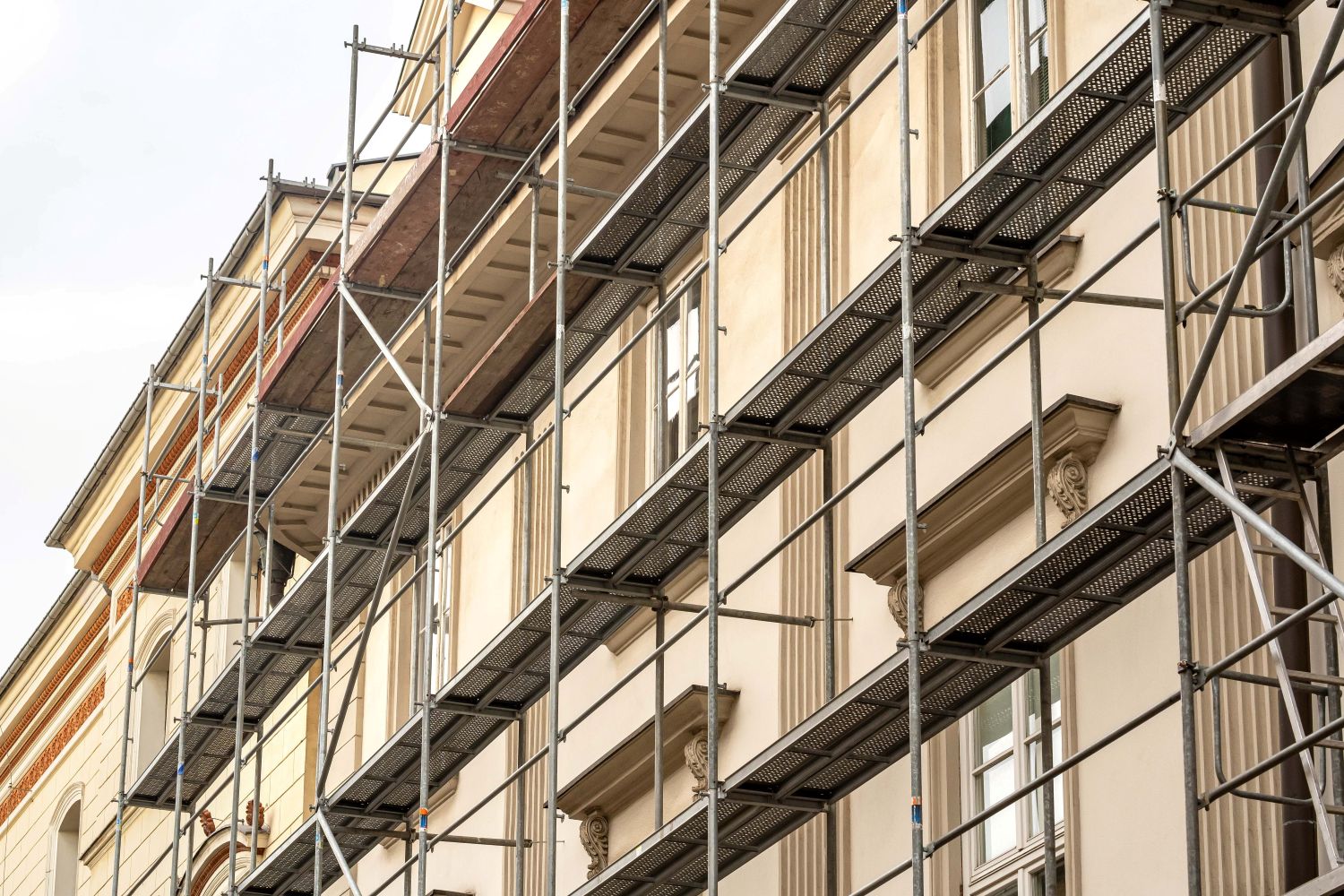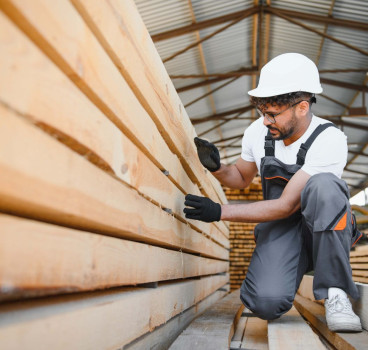What happens when buildings outlast their design life
The design life of a building is a critical concept in engineering and construction. It represents the period during which a structure is intended to perform its function safely, economically and without unforeseen major expenditure for maintenance or repair, assuming regular maintenance. For many commercial, residential and infrastructural assets, this figure is often stipulated as 50 or 60 years. However, the urban landscape has many structures that have long surpassed these theoretical benchmarks, remaining actively in use decades beyond their original design life. This phenomenon creates a complex grey area, presenting a host of unaddressed legal, structural and safety implications that pose silent, but significant challenges for owners, occupants and regulators alike, writes John Ridgeway.
The term "design life" is fundamentally a statistical and economic concept. It is not an expiry date. Engineers calculate it based on anticipated loads, material degradation rates, maintenance regimes and economic models that predict when extensive repair or replacement becomes more costly than building anew. For common building types, a 50-year design life reflects a reasonable expectation of performance under normal conditions, factoring in material durability for elements like concrete, steel and masonry, alongside typical wear and tear.
Yet, walk through any established city, and one encounters countless buildings from the mid-20th century, or even earlier, that are still perfectly functional and often highly valued. These structures have "outlived" their original design life, continuing to serve their purpose, sometimes with minimal adaptation, sometimes with extensive refurbishment. This disconnect between theoretical design life and actual operational longevity creates a significant regulatory and ethical vacuum. While their continued use often signifies robust original construction and diligent maintenance, it also means they are operating in an area where their long-term performance characteristics may be less predictable and their adherence to contemporary standards unverified.
The structural implications
The most immediate concern when a building outlives its design life revolves around its structural integrity. While structures do not suddenly "expire," materials degrade over time. Concrete can suffer from carbonation or chloride ingress, leading to reinforcement corrosion and spalling. Steel elements can corrode, lose cross-sectional area and experience fatigue. Timber can be susceptible to rot, insect infestation, or cracking. Foundation systems can experience settlement or movement due to changing ground conditions or groundwater levels.
For buildings designed in the mid-20th century, engineers relied on different regulations, material specifications and analytical methods. Their understanding of long-term material behaviour, particularly concerning fatigue or environmental exposure, may have been less advanced than current knowledge. For example, some concrete mixes or reinforcement practices common decades ago might be more susceptible to degradation than today's standards allow. Furthermore, buildings may have undergone multiple refurbishments or alterations over the decades, potentially introducing unrecorded structural modifications or additional loads that were not accounted for in the original design. These undocumented changes can compromise a structure's long-term stability in ways that are difficult to assess without intrusive and expensive investigations.
The critical issue is the lack of mandatory, comprehensive structural re-assessment once a building exceeds its design life. Unlike bridges or nuclear power plants, which often have prescribed life-extension assessments, commercial and residential buildings typically do not. Their continued use is often predicated on anecdotal observations, routine maintenance, or minor surveys for transactional purposes, rather than a deep engineering appraisal of remaining structural capacity against modern regulations and anticipated future loads. This leaves a significant gap in understanding their true condition and resilience against extreme events like seismic activity, high winds, or even accidental overload.
Safety concerns
Apart from fundamental structural issues, buildings operating beyond their design life frequently present safety implications related to contemporary standards for fire safety, occupant loads and accessibility.
Building regulations have evolved dramatically since the mid-20th century, particularly concerning fire compartmentation, escape routes, fire detection and suppression systems, and the fire performance of materials. Many older buildings, even if well-maintained, may not meet modern fire safety requirements without significant, costly upgrades. Their internal layouts, often designed for different occupancy patterns, might present challenges for efficient evacuation in an emergency. The materials used, such as early forms of cladding or internal finishes, might not meet current fire resistance standards, posing a heightened risk in the event of a fire.
In other examples, a building designed as a light manufacturing plant might now be an office block, or a residential block originally intended for families might now house multiple student occupants. These changes in use often lead to higher occupant densities, different furniture loads, or increased demands on mechanical and electrical systems, none of which were envisioned in the original design. Without a thorough reassessment, the building's capacity to safely accommodate these new demands can be compromised. Similarly, evolving social norms require enhanced accessibility features, energy efficiency, and environmental controls that older buildings simply were not designed to provide, impacting the well-being and productivity of occupants.
In addition to the main structure, the auxiliary systems within an older building - electrical wiring, plumbing, HVAC (heating, ventilation, and air conditioning, and lifts - also have their own design lives, often shorter than the main structure. As these systems age, they become prone to failure, increasing risks of electrical fires, water damage and compromised indoor air quality. While these are often addressed through maintenance, the cumulative effect of ageing infrastructure within an outlived building can lead to systemic unreliability and a higher frequency of disruptive incidents.
Legal and commercial ramifications
The continued use of buildings beyond their design life also creates a complex web of legal and commercial implications that are frequently unaddressed until an incident occurs. Building owners, facilities managers and sometimes tenants have a duty of care to ensure the safety of occupants. When a building exceeds its design life, establishing whether this duty has been met becomes more ambiguous. In the event of a structural failure, fire, or other incident, proving negligence can be complicated by the lack of clear contemporary standards for aged assets. Liability can fall on multiple parties, from original designers (if negligence is proven), to current owners, or even maintenance contractors, creating protracted legal disputes.
Insurers also typically base their risk assessments on standard building performance criteria and expected asset lifespans. As buildings age beyond their design life, quantifying risk becomes more challenging, potentially leading to increased premiums, reduced coverage, or difficulties in securing comprehensive insurance. This commercial impact can subtly deter necessary investment in maintenance or upgrades, creating a vicious cycle of neglect.

Furthermore, a building nearing or exceeding its design life might be valued lower, despite its current functionality, due to perceived future maintenance liabilities or the eventual need for significant capital expenditure. This can impact investment decisions, lender confidence, and the overall liquidity of older building stock in the property market.
What is not being addressed
The uncomfortable truth is that the issue of buildings outliving their design life is largely left unaddressed until a problem arises. There is no universal legislative trigger for mandatory, in-depth engineering assessment once a building passes its nominal lifespan. This omission is a significant oversight given the increasing age of much of the built environment in developed economies.
A proactive approach would involve implementing a statutory requirement for buildings to undergo comprehensive structural and safety reviews at regular intervals (e.g., every 10-15 years) once they reach a certain age (e.g., 40-50 years). These reviews, conducted by qualified independent engineers, would assess the building's current condition against modern regulations and anticipated future use, providing a baseline for necessary upgrades or life extension decisions.
Mandating robust, continually updated digital records for every building, akin to a "digital twin," would also provide invaluable information on original design, modifications, maintenance history, and material performance. This would dramatically simplify future assessments and ensure continuity of knowledge over decades, preventing crucial information from being lost.
Developing clear engineering methodologies and best practices for assessing, strengthening, and extending the life of existing structures, would further provide a standardised approach for engineers to evaluate aged assets and propose viable solutions for continued safe operation, rather than defaulting to demolition.
We can see therefore, that the increasing number of buildings actively in use well beyond their original design life presents a complex and largely unaddressed challenge for the construction industry and society at large. The grey area surrounding their continued operation conceals significant legal, structural and safety implications that are rarely confronted until an incident forces the issue.
Material degradation, outdated safety standards, changing occupancy demands and a fragmented regulatory landscape all contribute to this silent risk. Ignoring this growing cohort of aged assets is no longer tenable. A proactive, multi-faceted approach involving mandatory periodic assessments, digital record-keeping, life-extension engineering frameworks and clear policy incentives is urgently required. Only by addressing the enduring enigma of buildings that outlive their design life can we ensure the long-term safety, resilience and sustainability of our built environment.
Additional Blogs

What if Building Control went fully digital?
Building control governs structural integrity, fire protection, energy efficiency, accessibility and countless other aspects of design and construction. Historically, this process has been highly...
Read moreWhere most “Smart Buildings” go wrong
Smart buildings are often presented as the ultimate in modern construction - interconnected, efficient, intuitive and driven by real-time data. They promise lower operating costs, reduced energy use,...
Read more

The future of facilities management starts at RIBA Stage 0
Facilities management has traditionally been treated as a discipline that only becomes relevant once a building is handed over. At that point, FM professionals inherit decisions made months or years...
Read more